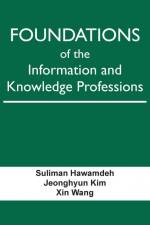av Hilbert Ernest
257
In poems celebrating survival and renewal, Ernest Hilbert summons the ageless conflict between human affection and the passing of time, recognizing that all we love must eventually disappear. Tender poems of fatherhood weigh against unsettling explorations of natural dangers and intimations of bodily harm. From porn sets to seedy gun ranges and heavy metal tribute nights in crumbling theaters, Hilbert's eye roves over the desolation and beauty of contemporary America, all the while feeling the irresistible pull of water-what Melville called "the ungraspable phantom of life." His poems return again and again to rivers, lakes, and the sea, there to find "a universe that loves the dark," one that "bears you up as if you had no weight.""Ernest Hilbert's Storm Swimmer is a gleaming cornucopia of dreams, nightmares, tenderness, and grace. In Hilbert we encounter the poet as allegorical realist: a seer who has 'known beauty almost impossible / To believe, nearly always lost amid / All the usual distractions.' This is a rare book both willing and able to capture the wide and relentless range of the human condition, in its varying lights and shadows, and in settings spanning the mundane, the tawdry, and the sublime. Storm Swimmer is a book of great feeling and of great technical skill. Everything in it is sacrificed for poetry, which is why everything in this beautiful book lives."-Rowan Ricardo Phillips, author of Heaven and judge"In Storm Swimmer, fatherhood is neither one-dimensional nor short-sighted; instead, fatherhood is a nexus, rigged with grace and curiosity-an enduring gift for a son and for readers. Toggling between the natural world and the relentless spectacle of contemporary life, acutely aware of the passage of time, Ernest Hilbert's poems are marvelously built, resonant."-Eduardo C. Corral, author of Guillotine: Poems"Ernest Hilbert has always written from the ragged edge between tradition and the present moment, and now he goes for a deeper immersion, a swimmer in life, aware of its most desperate and beautiful currents. The sea has taught him to ride out the detritus of existence, to see it but not be consumed by it, and his forms give spine to his vision. Storm Swimmer is his strongest book so far, urgent and real."-David Mason, author of Pacific Light



